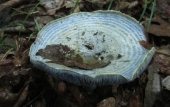




 3
3




'What we do now echoes in eternity.' Marcus Aurelius
How Permies Works Dr. Redhawk's Epic Soil Series




If I am not for myself, who will be for me?
If I am only for myself, what am I?
If not now, when?




John Pollard wrote:
What are the two big brown tanks? Rainwater collection?


 1
1












My Mission is to grow nutrient dense food and teach what I have learnt to any one who will listen.
 5
5




Joylynn Hardesty wrote:Regarding the possibly overgrazed paddocks, take a peek into regenerative grazing or farming. Here's an article on an experiment in Texas. I think the methods were first developed in Australia? So there may be resources out there that are more specific to your region.
Historically, some experts have said it takes three hundred to a thousand years to build inches of topsoil. But we’ve learned that’s actually not the case. Soil is not built primarily by decaying leaf matter and so forth. Living, healthy topsoil is created by plant root exudates – the carbohydrates, vitamins, organic acids, and other nutrients released into the soil by the root systems of plants. Of the sugars that plants create through photosynthesis, 30–40 percent transfers to the soil through the roots in exchange for nutrients. In this way, plants feed soil biology: fungi, bacteria, microorganisms, and mycorrhizae, the symbiotic associations between plants and fungi in the root zone. Those take the sugar and convert it to humus, which is topsoil.
So topsoil can actually be built quite quickly. But it won’t happen without diverse plant life. This diversity is key, and it has everything to do with the way we farm.

|
This tiny ad turned out a lot bigger than I thought it would
Rocket Mass Heater Resources Wiki
https://permies.com/w/rmh-resources
|


